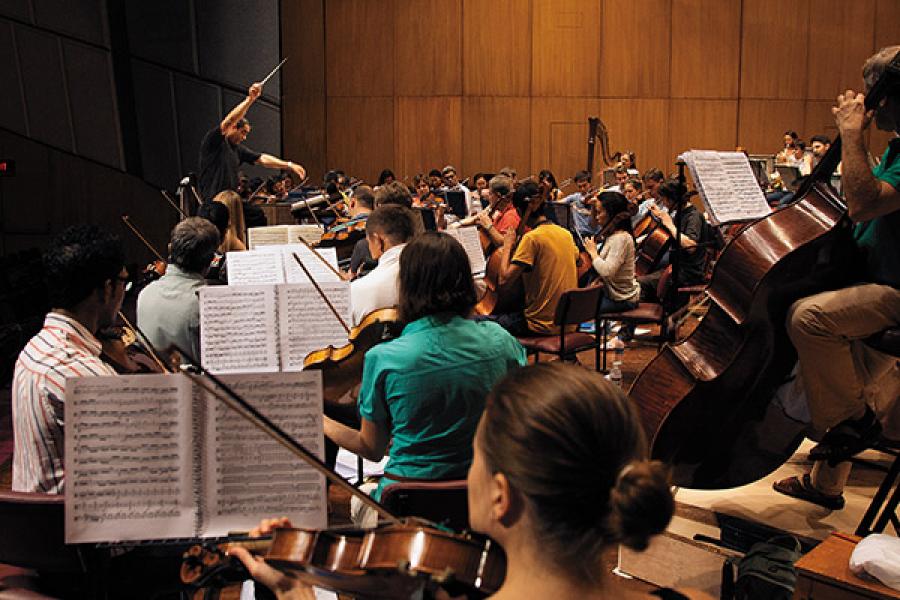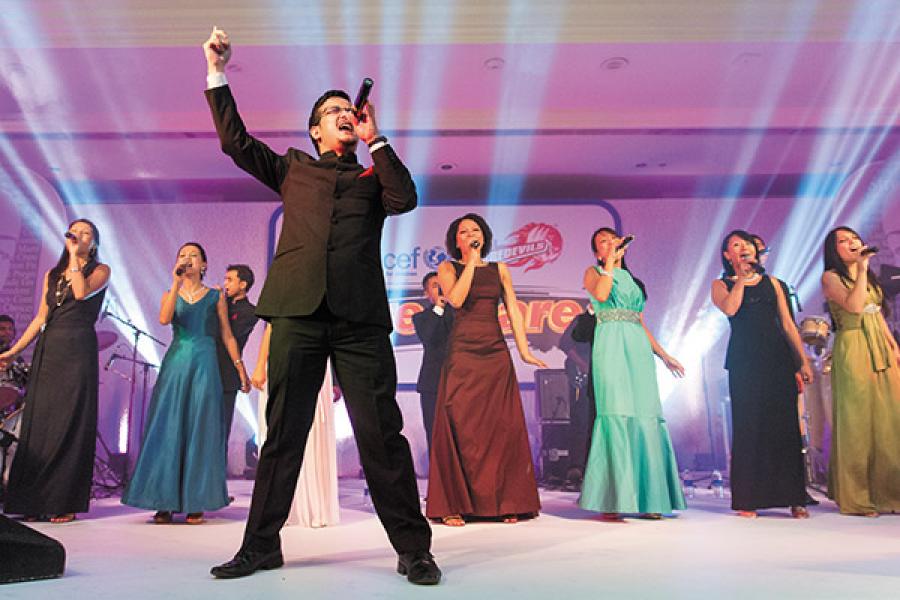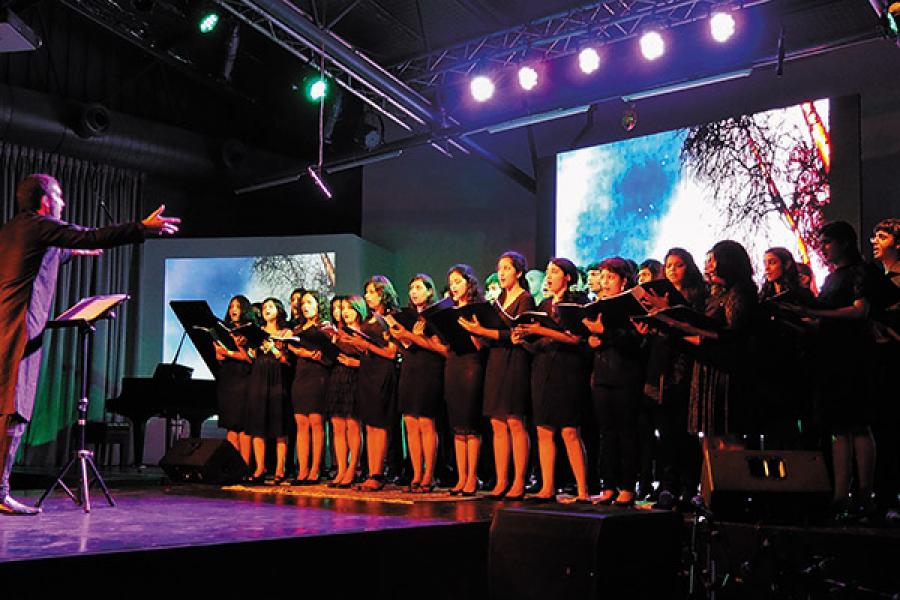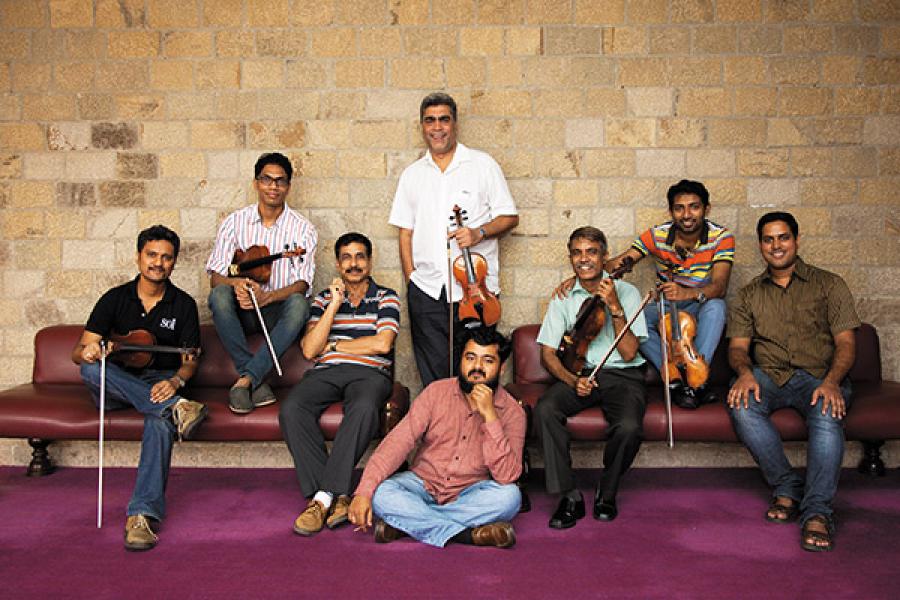
An Equal Music: Western Classical Music's Second Coming
Western classical music has never enjoyed the same support and patronage as its Indian counterpart, but a new future might be in the making
At the Jamshed Bhabha Theatre at the National Centre for the Performing Arts (NCPA), Beethoven’s Ninth Symphony is holding Mumbai’s posh set in thrall. As the Symphony Orchestra of India (SOI) weaves its way through the second movement and ends it with a flourish, a section of the audience breaks into applause.
If you are a Western classical music purist, you must be frowning; after all, concert etiquette demands that you never clap between movements. Your thoughts would be in line with what British classical music and opera journalist Jonathan Lennie wrote in his open letter to the “loud clapping man who sits behind me at concerts”: “Having sat through a long and profound work, why do you have to start making a racket as soon as you perceive it to be over?”
But Khushroo N Suntook, the NCPA chairman, refuses to turn his nose up at such transgressions: “It’s good in a way that we are moving away from the coughless audience. It indicates that a new generation is coming in. To survive, Western classical music needs this audience first. Etiquette can come later. We can always announce when not to clap.”
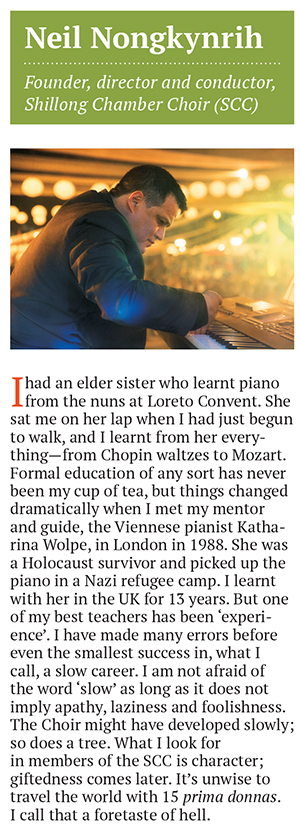
Notes from the Margin
The journey of Western classical music in India began with the advent of the British Raj. It was not uncommon, in the late 19th century, for soloists, en route to Australia by sea, to stop by Bombay to perform. In the 20th century, it flourished in some pockets, mostly former colonial centres, and within the Christian and Parsi communities, but only just, in the larger context, where it jostled with its Indian counterpart and the already booming Hindi film industry.
In the 1930s, ’40s and early ’50s, one of its most vibrant hubs was Bombay, where the husband-and-wife team of Jules and Olga Craen (conductor and pianist, respectively) and Mehli Mehta (the late father of conductor Zubin Mehta) were making waves. Mehta founded the Bombay Symphony Orchestra in 1935, and later a string quartet. Several globally acclaimed musicians—Yehudi Menuhin, Isaac Stern, Benjamin Britten—visited the city. The Bombay Madrigal Singers Organisation staged an annual opera, featuring legendary singers like Celia Lobo and Fay Ferreira.
In Calcutta, French violinist Philip Sandre institutionalised the training of Western classical music by setting up the Calcutta School of Music, perhaps the first such school in India, in 1915. Sandre left in the mid-1940s, passing the reins to a man of even larger repute, Spanish conductor Francisco Casanovas, who not only facilitated an exchange of ideas with Bombay’s musicians, but also with global maestros like Menuhin and Daniel Barenboim.
The tradition started hobbling in the mid-1960s. A handful of homegrown outfits continued to carry the torch: The Paranjoti Academy Chorus led by Coomi Wadia took Indian choral music to the world; Jini Dinshaw founded the Bombay Chamber Orchestra in 1962. But, these initiatives barely filled the overall vacuum. The government made matters worse with the Foreign Exchange Regulations Act in 1974. It dried up international transactions; fewer foreign artistes came to India, and it cost a fortune to import the best instruments.
Consequently, several talented musicians went abroad to study in the 1960s, ’70s, and ’80s and never came back. “There was interest in Western classical music, but it wasn’t widely accepted. People resisted it as they thought we were doing something ‘Western’, as opposed to something rooted in our heritage. It’s funny, because, at the same time, cricket, a ‘Western’ game, was firmly entrenched in the Indian psyche,” says Mehroo Jeejeebhoy, founder trustee of the Mehli Mehta Music Foundation (MMMF), a not-for-profit that promotes Western classical through concerts and music education.
One casualty of the downturn was Deirdre Lobo-D’Cunha, daughter of opera legend Celia Lobo, now a concert artiste and a vocal coach and consultant. Between 1984 and 1988, she went abroad for vocal classical training. She says, “Due to the fact there were not any music conservatories or good teachers in India at the time, I was frustrated. For me, there was no growth.” She continued to study abroad, and in 1990, decided to make her career outside India.
Upbeat
The turnaround started with the liberalisation of the Indian economy in 1991. Among the companies wanting to tap the potential of the Indian market were instrument manufacturers. “1994 was the watershed year,” says Anthony Gomes, director at Furtados, one of the largest instrument retailers in India. “The ban on businesses importing consumer goods was lifted.” Top global companies like Gibson, Fender, Yamaha, Mapex and Samick came in, making quality instruments available at a fraction of what they used to cost earlier.
As the country slowly blended with the global economy, Indians were exposed to a plurality of cultures. “It effected a change of attitude,” says Jeejeebhoy of the MMMF, “People began to see Western music as something that can enhance their lives.” Like in other fields, technology—and more specifically the internet—turned out to be a game-changer. Says Veda Aggarwal, a classical guitarist from Pune: “There’s a before-and-after-YouTube story in the history of Western classical music in India. I know of people in small towns who watch videos of the masters at play, and find online tutorials. I have picked up lessons on YouTube and taken classes on Skype.”
The resurgence peaked in 2006, when NCPA chairman Suntook founded the SOI, India’s only fully professional orchestra, with Kazakh virtuoso violinist Marat Bisengaliev, also the orchestra’s music director. The SOI made its international debut in Moscow in June 2010, at the Festival of World’s Symphony Orchestra. It played at the Royal Opera House in Muscat in February 2013. In Mumbai, it performs twice a year, in February and September.
Off Notes
But, for some exponents, this was hardly the renaissance they had envisaged. “The SOI might have done wonders for the Mumbai audience, but nothing for the rest of the country. It hardly travels to other cities,” says Situ Singh Buehler, a concert artiste and a vocal coach from Delhi.
Of the 70-odd musicians that the SOI began with, only six were Indians (there are 12 this season). Lobo-D’Cunha is unhappy about this: “It is called the Symphony Orchestra of India. However, there are hardly any Indians in the orchestra. There is no dearth of good musicians in India. The NCPA should develop and use our own Indian musicians, instead of bringing in foreigners.”
“You can blame me for that,” says Suntook. “When we started auditions in 2005, we heard dozens of Indians. And all I heard Marat say was ‘nyet, nyet’ [Russian for no]. My vision, and that of Dr [Jamshed] Bhabha [NCPA founder], was to create a professional orchestra of excellence. We were going to settle for nothing less.”
Zane Dalal, SOI’s UK-born Parsi conductor-in-residence, agrees. “It was never going to be an Indian orchestra just for the heck of it. What was the idea? That we would put a Symphony Orchestra of India out there and it would sound ear-peeling? No. The original Indian musicians who joined in 2006 were chosen on the basis of Marat saying, ‘I see a potential in them if they give themselves to rigorous training for many months in a year with my teachers.’ It’s an international art form; it’s not an Olympic team. It’s not a national endeavour to have everybody in the orchestra be of Indian origin. Other countries where local nationality plays a part don’t do so well. The orchestra in Malaysia is fantastic. They’re all German.”
But there’s no doubt that the SOI has been a start. Ask the likes of Prabhat Kishore, Mark Nunes and Mario Fernandes, who turned their backs on Bollywood to join it. For some, it was the passion of classical music, for others, it was the financial stability. SOI is a contrast to the film industry where electronically produced music shut them out.
Do we have hopes of an Indian-dominated ensemble in future?
Dalal and Suntook are upbeat.
So is Bisengaliev. “I am confident we will. Some of the kids I teach are very good and will be ready to perform on stage.”

Closed Encounters
Perhaps the cultural milieu that bred Western classical music in India explains why it still has a niche audience. Always considered elitist, globalisation helped it percolate down the social rung but only towards the aspirational classes. Neil Nongkynrih, founder, director and conductor, Shillong Chamber Choir says, “Western classical has a following predominantly among the Parsi and Christian populations and is emerging within the bourgeoisie in Delhi and other cities. I think most young Indians who learn [it] come from affluent backgrounds.”
Adam J Greig, academic co-ordinator of the KM Music Conservatory, a higher education institute set up by the AR Rahman Foundation in Chennai, believes classical music gets an elitist image across the world, but fights it too. He recalls the BBC Scottish Symphony Orchestra that visited Chennai in March; the organisers imposed a strict dress code, which was rescinded only after an outcry from the audience.
A limited constituency also means funding is inadequate, and comes in infrequent tranches. And to top it, there isn’t a single concert-ready auditorium in India (with adequate acoustics, backstage, dressing rooms, a seating capacity of at least 2,500 etc), except the NCPA’s Jamshed Bhabha theatre. Even that has a capacity of about 1,100. So, for instance, if the SOI was to perform outside Mumbai, it would have to ferry its entire ensemble—and the instruments, furniture, and props—to and fro. Without the consistent support of corporate partners, expenses would spiral out of control.
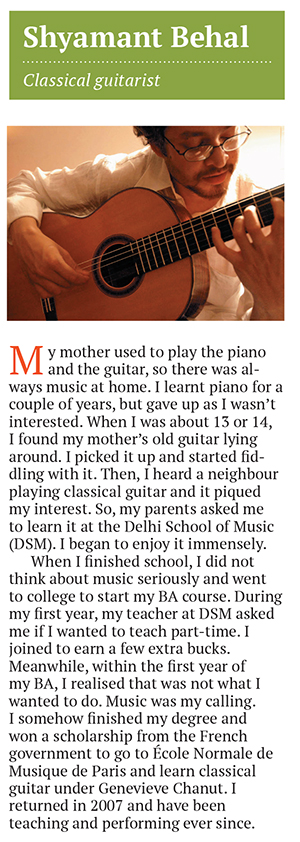
The erstwhile Soviet Union started the Bolshoi Opera House, while present-day China has built state-of-the-art auditoriums in Shanghai. In India, however, while the Ministry of Culture is said to have recently opened its purse for the NCPA and the SOI, these are exceptions. In fact, it was only as recently as August 28 that the Maharashtra Cabinet waived off the entertainment tax that was levied on Western classical music under a 1923 regulation (Indian classical concerts have long been exempted from it).
In Delhi, performers face an even bigger hurdle: The audience is “spoilt” and don’t want to pay for tickets. The government, too, is willing to promote other forms of Western art, like theatre and literature, and include it in school curricula, but not music. “They say yes to Shakespeare, but not Beethoven,” says Singh Buehler.
In some cases, government intervention has been ruinous. Goa is a case in point. “The state has many wonderful musicians, and tremendous talent,” says SOI’s Dalal. “And the moment it got good, others stepped in and made it into something it should not be. The current situation could realise so much more potential than it does. There are so many great musicians [in Goa] who can’t get where they should, and look elsewhere.”
Shyamant Behal, a Paris-trained classical guitarist and a former student-turned-teacher at the Delhi School of Music, lives and teaches music in Goa. But he is certain that none of his students will make a career of their music. “It has no traditional base in India. There are only a handful of people who listen to and play it. The government is not pushing anything and the private individuals can only do so much. I make no money of music, even though that’s what I do professionally.”
If the lack of money deters talented students from taking up music as a profession, it eventually results in a dearth of good teachers. Despite its busy concert calendar, even Mumbai feels it. For the most part, the city has had to bank on eminent singers like Deirdre Lobo-D’Cunha or Patricia Rozario, both settled abroad. Lobo-D’Cunha, based in the US, is working as the vocal coach for Jesus Christ Superstar, the classic Andrew Lloyd Webber-Tim Rice musical that is being staged in Mumbai later this year.
“Even in Delhi and the NCR, some senior students are teaching juniors or beginners in the schools that are mushrooming all over,” says Singh Buehler.
Despite the few formal institutes, the teaching of Western classical music in India remains a far cry from what El Sistema essayed in Latin America. (In 1975, conductor Jose Antonio Abreu set up a free orchestra training programme for Venezuelan youths; it has trained over 2 million children, keeping them off drugs, alcohol and gang-related violence.) As Shillong Chamber Choir’s Nongkynrih says, if teaching is not stimulating enough, Western classical music could end up as A dead half-hour full of rules, playing music that was written in ink with a feather, while we live in a world dominated by Facebook and Twitter.
Overtures
NCPA’s Suntook feels the only way Indian musicians can graduate from being also-rans to brilliant is through exposure, and that can be achieved only by “taking Western classical music outside the confines of the NCPA”. The centre has taken baby steps in the direction, sending teachers to The Happy Home and School for the Blind, and municipal schools in Mumbai. He believes that out of quantity, emerges quality: If you teach a generation of children, you’ll get a handful of maestros in the next decade. The way, perhaps, Lang Lang, a superstar concert pianist, emerged out of the woodworks in China.
The outreach activities of the Calcutta School of Music, which is about to complete its centenary in 2015, have been noteworthy. In 2005, it took under its wings a string orchestra set up by Father Matheissen of the Oxford Mission, which works with underprivileged children in West Bengal and Bangladesh, and rechristened it the Calcutta Chamber Orchestra. The CCO has performed at several prestigious events, including operas produced by The Neemrana Foundation and a fundraising concert with reputed pianist Pervez Mody. “We have also started a junior orchestra comprising musicians between 12 and 16 years old from the Oxford Mission,” says Dickoo Nowroji, president, Calcutta School of Music.
In Chennai, the KMMC and the AR Rahman Foundation have set up The Sunshine Orchestra to train poor children and provide them with free string instruments. The first batch has completed its schooling and is training full-time to be musicians. Besides, there has been a spurt of workshops and masterclasses across the country, some to sensitise youngsters to Western classical music and others to mentor aspiring performers.
But there’s still a long way to go for this art form to shed its elitist tag and increase its reach and acceptability. As Jini Dinshaw of the Bombay Chamber Orchestra says, “Several organisations claim to be popularising Western classical music in India, but each is operating in its own niche and in isolation. A collaborative effort is needed to bring about real change.”

(With additional reporting by Peter Griffin)
(This story appears in the 03 October, 2014 issue of Forbes India. To visit our Archives, click here.)
-
 Anagha
AnaghaIndia has it\'s own classical music , no need to impose western crap on us please
on Oct 4, 2014 -
 Peter Cigleris
Peter CiglerisInteresting article, as a member of SOI i\'m committed to furthering the cause of the SOI and Western Classical Music in India. I believe all persons have a right to it and hope that all sections of Indian society will be able to experience Western Classical Music and will want to take up the learning of orchestral instruments so that SOI will truly become the Orchestra for India. Sadly much work is needed in this area as, like your article suggests, that no one musical institution has worked together to produce Indian musicians of international calibre. My hope is that the SOI and others can work together to begin this process. It will take a long time but the results will be wonderful for the cultural scene in India.
on Oct 3, 2014 -
 Arjun Em
Arjun EmThanks Forbes for this article. Really enjoyed reading. I trained in piano as a child and wanted to study music but could not pursue it further because of familial pressures.There was no future in such music people said. Nice to know that Indians are accepting western classical even if that is a small number and only in some cities.
on Sep 29, 2014

